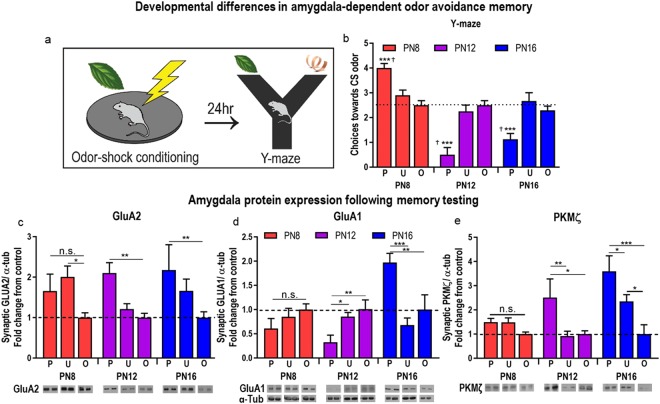Figure 2.
Developmental emergence of amygdala-dependent threat memory and amygdala protein expression. 24 hours following a Pavlovian odor-shock conditioning procedure that paired neutral peppermint odor presentations with 0.5 mA shocks to the tail, rat pups were tested for long-term memory using a Y-maze odor choice test containing the conditioned stimulus odor (peppermint) and a familiar odor (clean wood shavings) (a). Threat learning and memory emerged by PN12, as indicated by a significant reduction in choices towards the conditioned stimulus (CS) peppermint odor in the Y-maze choice test (b). Threat memory and corresponding avoidance behavior were associated with increases in PKMζ and GluA2 expression in the amygdala at PN12 and PN16 (c–e). GluA1 decreased in PN12 pups while it increased in PN16 pups (d). P/U/O: paired, unpaired, odor only. *P < 0.05, **p < 0.01, ***p < 0.001; † denotes significant difference from chance performance on Y-maze (dotted line), p < 0.05. Error bars indicate mean ± SEM. Dashed line: average protein expression in untrained “odor only” group (control). Blots for each condition show two adjacent lanes. The same tubulin-corrected values were used for all markers probed. Comparisons were made across gels processed in parallel using samples derived from the same experiment. Full-length blots/gels are presented in Supplementary Figures 1–5.

